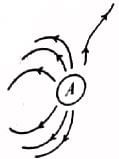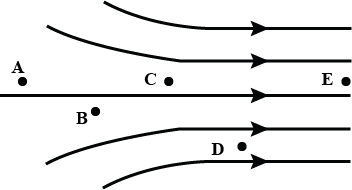Test: Electric Field Lines (NCERT) - NEET MCQ
10 Questions MCQ Test - Test: Electric Field Lines (NCERT)
Which of the following figure represents the electric field lines due to a single positive charge?
Which of the following figure represents the electric field lines due to a single negative charge?
Which of the following figures correctly shows the top view sketch of the electric field lines for a uniformly charged hollow cylinder as shown in figure?

Figure shows the electric field lines around three point charges A, B and C. Which of the following charges are positive?


Figure shows the electric field lines around three point charges A, B and C. which charge has the largest magnitude?


Figure shows the electric field lines around three point charges A, B and C. which or regions of the figure could the electric field be zero?


A non-uniform electric field is represented by the diagram. At which of the following points the electric field is greatest in magnitude?

Which of the following curves shown below cannot possibly represent electrostatic field lines?
Which of the following statements is not true about electric field lines?














